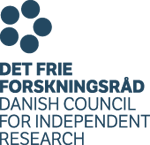DANDRITE researchers receive DFF-Research Project Grants from the Danish Council for Independent Research
Core group leaders Anders Nykjær and Poul Nissen, group leader Sadegh Nabavi and team leader Magnus Kjærgaard are all recipients of research grants from the FNU, FSS and FTP sections of DFF.

Poul Nissen receives DKK 5,902,933 in funding for the project entitled: ‘Regulation of plasma-membrane calcium pumps – from single molecules to structures’. This project is joint with team leader Magnus Kjærgaard and will also be in collaboration with group leader Mark Denham and core group leader Poul Henning Jensen. The grant is received within the field of Natural Sciences - The Danish Council of Independent Research has awarded 51 DFF-FNU Research Project Grants to researchers in Denmark to the sum of approximately DKK 159 million.
Anders Nykjær receives DKK 5,140,560 in funding for his project ‘Functional characterization of the Alzheimer’s Disease and type 2 diabetes risk gene SORCS1’. The grant is received within the field of Medical Sciences. The Danish Council of Independent Research has awarded 62 DFF-FSS Research Project Grants to researchers in Denmark to the sum of approximately DKK 150 million. Anders Nykjær explains about th project:”Evidence suggests that Type 2 diabetes and Alzheimer’s Disease may have a substantial etiological overlap since each increases the risk of the other. The sortilin receptor SorCS1 is a risk gene for both diseases, and we wish to identify the molecular mechanisms underlying the involvement of SorCS1 in these diseases. In an interdisciplinary approach including structural biology, transgenic mice, electrophysiology, and mouse behavior, it will be characterized how SorCS1 functions in the brain and whether it may comprise an attractive target for development of new drugs against neurodegeneration and cognitive decline.”
Sadegh Nabavi receives DKK 2,592,000 in funding for his project entitled ‘Mapping the Neural Circuit for an Innate Fear Behavior’. The grant is also received within the field of Medical Sciences. About the project: Fear is one of the most basic mechanisms essential for vertebrates’ survival. Many fears are formed by experience. For example, the fear of fire or pain-triggering stimuli is learned, meaning that it is dependent on “synaptic plasticity”, which is defined as the ability of the synaptic network to strengthen or weaken over time in response to the modification of their activity (Nabavi et al., 2014, Nature).
But another contingent of fear is already hardwired into the brain: the capacity of a prey to identify a predator is innate and highly conserved, and so is independent of synaptic plasticity. The visual system in particular is crucial for detecting potential threats (for review, Silva et al., 2016, Learning & Memory). In laboratory rodents, an innate fear can be induced by exposing the animal to a fake predator, like a toy snake or a looming object (Tovote et al., 2016, Nature; Wei et al., 2015, Nature). By contrast, a learned fear is induced by exposing the animals to a neutral stimulus like a light, associated with an aversive stimulus like a foot shock (Garcia et al., 1999, Nature). Whether innate or learned, both types of fear lead to the same appropriate behavioral response expressed by a lack of movement (i.e freezing), hiding or fleeing. This indicates that learned fear and innate fear engage overlapping circuits in the brain’s fear center: the amygdala. How a learned fear or the view of a predator can trigger the same behavioral response, with only the former being dependent on synaptic plasticity? In other words, how much do the amygdala circuits differ for a learned vs an innate fear from the inputs to the outputs, through the internal circuits?
By using invasive techniques in rodents we can gain valuable information about these circuits. Our starting point will be to identify the regions sending no valence visual stimulation (light) or salient information (predator) to the amygdala using optogenetics. We predict that only the activation of the regions passing the visual information about a predator will induce a fear response. As we hypothesize that a learned fear and an innate fear engage two independent circuits within the amygdala, we will use a system allowing us to distinguish the neurons that are specifically activated by a learned or an innate fear, in the same animal. At the end, we expect that sole the activation of the neurons dedicated to a learned or an innate fear should elicit a fear response without any external threat signals (learned or innate). Conversely, the inhibition of these neurons should prevent the fear response in the animals in the presence of the threatening signal. Finally, we will identify the downstream fear-expression systems where these two populations of neurons project to by using imaging and electrophysiology techniques.
At the end of this research project, we should identify the integral circuits for a learned vs an innate fear, from the inputs, through the amygdala neurons, to the downstream regions, at the behavioral, cellular, and molecular levels.
Magnus Kjærgaard receives DKK 2,591,605 in funding for his project entitled ‘Antibody engineering facilitated by avidity’. The grant is received within the field of Technology and Production – The Danish Council of Independent Research has awarded 49 DFF-FTP Research Project Grants within the field of Technology and Production to researchers in Denmark to the sum of approx. DKK 188 million. Read more about Magnus’ project here.
The total amount of the above listed DFF-Research Project Grants are DKK 16,227,098. The grants are awarded within the framework of the Danish Council for Independent Research’s E2016 and F2017 call, with the aim of providing researchers in Denmark the best possible conditions for producing outstanding research results at a high international level based on their own.
Read more about the projects at the Danish Council for Independent Research’s website.
